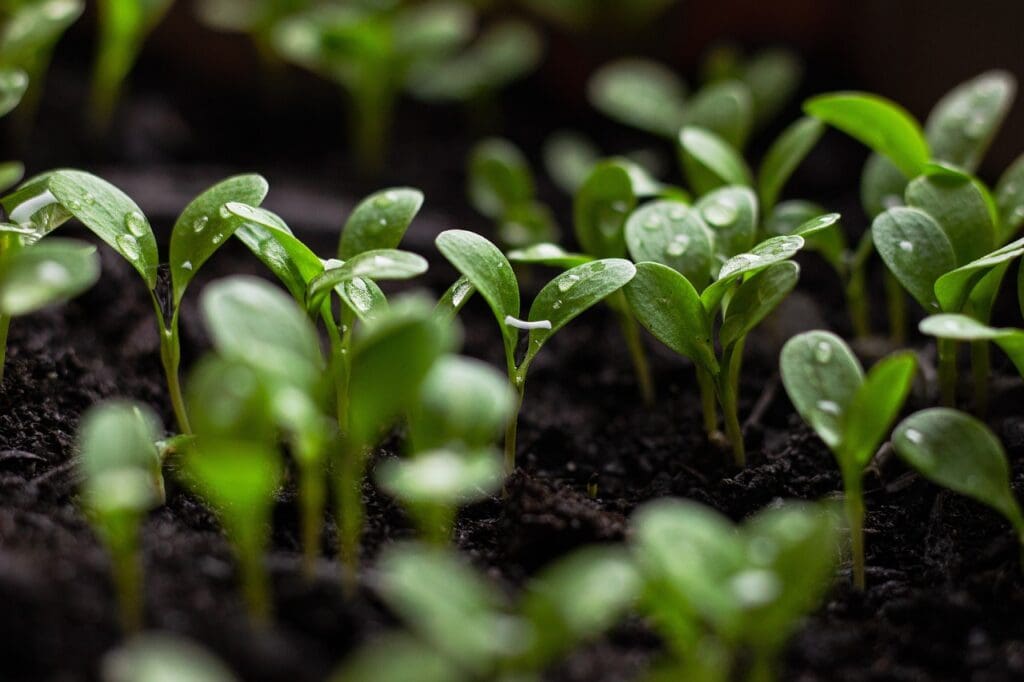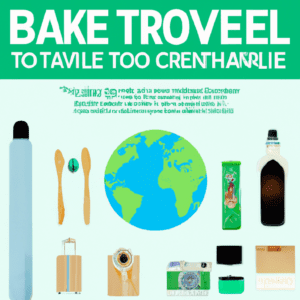Living a sustainable lifestyle has become increasingly important in today’s world. With the growing concern about environmental conservation, many individuals are seeking practical ways to reduce household waste and create a zero-waste home. In this article, you will discover a range of helpful tips that can be easily implemented in your daily routine, allowing you to make a positive impact on the planet while also saving money. From simple swaps to clever recycling ideas, these practical suggestions will empower you to take small steps towards a more sustainable future.


Creating a Zero-Waste Mindset
Understanding the Importance of Reducing Household Waste
In today’s world, where waste has become a significant environmental issue, it is crucial to understand the importance of reducing household waste. By minimizing the amount of waste we generate, we can have a positive impact on the environment and contribute to a more sustainable future. When we reduce waste, we conserve natural resources, decrease pollution and greenhouse gas emissions, and protect wildlife habitats.
Identifying the Benefits of a Zero-Waste Home
Transitioning to a zero-waste lifestyle offers numerous benefits, not only for the environment but also for our own well-being. A zero-waste home can save money by reducing unnecessary purchases, lowering utility bills, and minimizing food waste. It can also lead to a decluttered living space, reduced stress, and a sense of satisfaction in making a positive change. By adopting a zero-waste mindset, you empower yourself to live a more intentional and sustainable life.
Setting Realistic Goals for Zero-Waste Living
Embarking on a journey towards zero waste can feel overwhelming at first. Setting realistic goals is key to staying motivated and making progress. Start by focusing on one aspect of waste reduction, such as minimizing food waste or minimizing packaging waste, and gradually expand your efforts over time. Celebrate each small achievement along the way and remember that every little step counts towards a more sustainable lifestyle.
Minimizing Packaging Waste
Shopping with Reusable Bags and Containers
One of the simplest yet most effective ways to reduce packaging waste is to bring your own reusable bags and containers when shopping. Invest in sturdy, reusable shopping bags that can be used for groceries, clothing, and other purchases. Additionally, carrying reusable containers and jars for bulk items, like grains, nuts, and spices, can help eliminate the need for single-use packaging.
Avoiding Single-Use Items and Packaging
Single-use items contribute significantly to the waste problem. By avoiding them, we can make a substantial difference. Say no to plastic straws, disposable cutlery, and paper plates. Instead, opt for reusable alternatives like stainless steel or bamboo straws, reusable cutlery sets, and durable plates and bowls. When grocery shopping, choose products with minimal or no packaging to further reduce waste.
Opting for Bulk Shopping and Refill Stations
Bulk shopping not only saves money but also reduces packaging waste. Look for grocery stores or specialty shops that offer bulk items like grains, cereals, nuts, and cleaning supplies. Bring your own reusable containers and fill them up directly, eliminating the need for disposable packaging. Additionally, some stores now have refill stations for household products like laundry detergent or shampoo, allowing you to refill your containers and decrease waste even further.
Reducing Food Waste
Meal Planning and Smart Grocery Shopping
Planning meals in advance and making a grocery list can help in reducing food waste. Take stock of what you already have in your pantry and fridge before heading to the store, and plan your meals accordingly. Stick to your list to avoid unnecessary purchases and only buy what you know you will consume. By planning meals and grocery shopping mindfully, you can minimize food waste and save money in the process.
Proper Food Storage Techniques
Properly storing food is essential to prevent spoilage and extend its shelf life. Make sure to store perishable items in the refrigerator promptly. Use transparent containers to store leftovers, making it easier to see and remember to consume them. Labeling and organizing your fridge and pantry can help avoid forgotten items that end up going to waste. Additionally, learn about optimal storage conditions for different fruits and vegetables to keep them fresh for longer.
Creative Uses for Leftovers
Even with careful planning, leftovers are bound to happen. Instead of letting them go to waste, get creative with incorporating them into new meals. Leftover vegetables can be transformed into delicious stir-fries or soups, while stale bread can be used to make croutons or breadcrumbs. Embrace your culinary creativity and find ways to repurpose leftovers, reducing waste while enjoying new flavors.
Composting and Recycling
Starting a Home Composting System
Composting is an excellent way to reduce organic waste and produce nutrient-rich soil for gardening. Starting a home composting system is relatively easy and can be done regardless of the amount of space you have. Identify a suitable location in your yard or even indoors if you have limited space. Compost fruit and vegetable scraps, coffee grounds, tea bags, and yard waste like leaves and grass clippings. Remember to balance green and brown materials and turn the compost periodically to speed up the decomposition process.
Understanding Different Composting Methods
There are various composting methods to choose from, depending on your living situation and available resources. Traditional composting in a backyard bin or pile is a popular option for those with outdoor space. Vermicomposting, using worms to decompose organic matter, is a great alternative for apartment dwellers. Bokashi composting, involving fermentation with beneficial microorganisms, is another effective method that can handle a wider range of materials, including meat and dairy products.
Recycling Right: Sorting and Cleaning Recyclables
Proper recycling is essential in reducing waste and preventing contamination of recyclable materials. Familiarize yourself with the recycling guidelines specific to your area, as they may vary. Sort recyclables into designated bins, removing any non-recyclable components. Rinse containers and bottles to remove leftover food or drink residues. By taking the time to sort and clean recyclables correctly, you can ensure that they can be effectively processed and turned into new products.


Reducing Paper and Plastic Waste
Transitioning to Digital for Bills and Documents
In today’s digital age, transitioning to digital platforms for bills and documents can significantly reduce paper waste. Opt for electronic billing and statements whenever possible. Set up online accounts to receive and manage documents electronically. By embracing digital alternatives, not only are you reducing paper waste, but you are also decluttering your physical space and simplifying your life.
Using Reusable Cloth Instead of Paper Products
Paper towels, napkins, and tissues contribute to both paper waste and deforestation. Make a switch to reusable cloth alternatives to reduce your environmental footprint. Invest in reusable cloth towels and napkins that can be washed and reused. Use handkerchiefs or cloth tissues instead of disposable ones. By adopting reusable cloth products, you not only save money in the long run but also help conserve natural resources.
Finding Alternatives to Plastic Packaging
Plastic packaging is a significant contributor to waste and pollution. Seek out alternatives to plastic packaging whenever possible. Choose products that come in glass, metal, or paper packaging instead. Look for local stores or online retailers that specialize in plastic-free packaging options. By supporting these alternatives, you send a message to manufacturers and encourage them to adopt more sustainable packaging practices.
Smart Water Usage
Conserving Water in Daily Activities
Conserving water is crucial for both the environment and water bills. Simple changes in our daily activities can have a significant impact. Turn off taps when not in use, whether while brushing your teeth or doing dishes. Take shorter showers or consider installing a water-efficient showerhead. Capture rainwater for outdoor use, such as watering plants or washing your car. Every drop counts, and by being mindful of water usage, you can reduce waste and save this precious resource.
Choosing Energy-Efficient Appliances
When it comes to water usage, choosing energy-efficient appliances is key. Look for dishwashers and washing machines with high energy and water efficiency ratings. Opt for low-flow faucets and toilets, which use less water without sacrificing performance. By investing in energy-efficient appliances, you not only decrease water waste but also save on utility bills in the long run.
Collecting and Reusing Graywater
Graywater refers to gently-used household water not contaminated with sewage, such as water from showers, sinks, or laundry. Collecting and reusing graywater is an excellent way to conserve water and minimize waste. Systems can be set up to divert graywater for irrigation purposes, reducing the use of freshwater for watering plants. Consult local regulations and guidelines to ensure proper collection and usage of graywater in your area.


Eco-Friendly Cleaning and Personal Care
Making Your Own Cleaning Products
Commercial cleaning products often contain harsh chemicals that are harmful to both the environment and our health. Making your own cleaning products using simple ingredients like vinegar, baking soda, and essential oils can eliminate the need for toxic chemicals. These natural alternatives are effective, safe, and significantly reduce waste through the use of reusable containers.
Using Natural Alternatives for Personal Care
Similar to cleaning products, many personal care products contain harmful chemicals and excessive packaging. Explore natural alternatives for skincare, haircare, and personal hygiene. Look for products with minimal packaging or opt for package-free options like shampoo bars or refillable containers. By choosing natural and sustainable personal care products, you not only reduce waste but also prioritize your own well-being.
Choosing Sustainable and Non-Toxic Brands
When purchasing cleaning or personal care products, choose brands that prioritize sustainability and non-toxic ingredients. Look for certifications or labels indicating that the products are eco-friendly, organic, or cruelty-free. These brands often use recyclable or biodegradable packaging and minimize the use of harmful substances. By supporting these companies, you contribute to a more sustainable industry and create demand for responsible products.
Donating, Repairing, and Upcycling
Finding Local Donation Centers and Programs
One person’s trash could be another person’s treasure. Instead of throwing away unwanted items, consider donating them to local donation centers or programs. Clothes, furniture, electronics, and household items that are in good condition can find new homes and avoid ending up in landfills. Research local charities, thrift stores, or online platforms that facilitate donations, and give your items a second chance to be loved and used.
Learning Basic Repair Skills for Household Items
Rather than immediately discarding broken or damaged items, learn basic repair skills to extend their lifespan. Simple fixes can often be done with the help of online tutorials or DIY guides. Repairing appliances, electronics, or furniture not only reduces waste but also saves money by avoiding unnecessary replacements. Embrace the satisfaction of fixing things yourself and contribute to a more sustainable lifestyle.
Getting Creative with Upcycling Projects
Upcycling is the process of transforming old or discarded materials into something new and useful. Embrace your creativity and explore ways to upcycle items rather than throwing them away. Turn glass jars into stylish candleholders or plant pots. Use old fabric scraps to create unique accessories or patchwork quilts. With upcycling, you not only save items from entering the waste stream but also add a personal touch to your living space.


Reducing Energy Consumption
Implementing Energy-Saving Practices at Home
Reducing energy consumption is essential for both the environment and your utility bills. Implement simple energy-saving practices at home to make a significant impact. Turn off lights and unplug electronics when not in use. Use natural lighting and ventilation whenever possible. Opt for energy-efficient light bulbs and appliances. Adjust your thermostat to conserve energy. These small changes can add up to significant energy savings over time.
Investing in Energy-Efficient Appliances
When it’s time to replace old appliances, choose energy-efficient models. Look for appliances with high energy efficiency ratings or Energy Star certifications. Energy-efficient refrigerators, air conditioners, or washing machines use less energy to operate, reducing your overall environmental footprint. While they may cost more upfront, the savings on utility bills and the long-term environmental benefits make them worthwhile investments.
Utilizing Renewable Energy Sources
Consider utilizing renewable energy sources to power your home. Solar panels are a popular option, as they can generate electricity from the sun’s energy. Install solar panels on your roof or explore community solar programs. Wind turbines are another renewable energy source to consider if you have sufficient space and live in a windy area. By harnessing clean, renewable energy, you contribute to a greener future and reduce reliance on fossil fuels.
Conscious Consumerism
Evaluating the Lifespan and Sustainability of Products
Before making a purchase, it is essential to evaluate the lifespan and sustainability of the product. Consider the quality and durability of the item. Will it last for a long time, or will it need to be replaced soon? Look for products made from sustainable materials and manufactured using eco-friendly processes. Opt for items that can be repaired or recycled at the end of their lifespan. By choosing products that are built to last and have minimal negative impact, you reduce waste and support environmentally responsible practices.
Supporting Local and Sustainable Brands
Supporting local and sustainable brands is an effective way to promote conscious consumerism. Research and seek out local businesses that prioritize sustainability and social responsibility. These brands often have transparent supply chains, use ethically sourced materials, and produce goods with minimal environmental impact. By supporting these businesses, you contribute to the local economy and encourage other companies to adopt more sustainable practices.
Reducing Impulsive Buying and Mindless Consumption
Impulsive buying and mindless consumption contribute significantly to waste and clutter. Before making a purchase, take a moment to reflect and ask yourself if the item is necessary or if it will truly bring you joy and value. Consider waiting for a few days to determine if the desire to purchase is fleeting or genuine. By being more mindful of your buying habits, you can reduce unnecessary purchases, decrease waste, and live a more intentional lifestyle.













